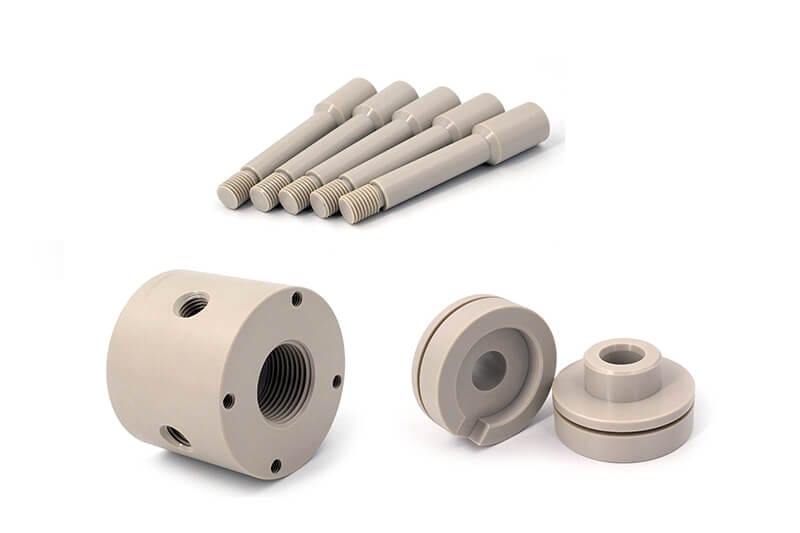
PEEK and PI: The Next Generation of High-Performance Engineering Plastics
Introduction
Engineering plastics have played a crucial role in the development of material science, finding applications from everyday consumer goods to aerospace, automotive, and electronics. However, traditional engineering plastics like nylon (PA) and polycarbonate (PC) face significant performance bottlenecks, especially in high-temperature and high-stress environments. The emergence of PEEK (Polyether Ether Ketone) and PI (Polyimide) has brought revolutionary breakthroughs, offering superior thermal stability, mechanical strength, and long-term reliability.
Structural Innovation: The Chemical Bond Foundation
PEEK: The Power of Ether-Ketone Alternation
PEEK's molecular chain alternates ether (-O-) and ketone (-C=O-) groups, granting it exceptional thermal and chemical stability. Synthesized via polycondensation of 4,4'-difluorobenzophenone and hydroquinone, PEEK achieves high structural regularity, resulting in outstanding physical properties.
Crystallinity: Benzene ring spacing (~0.38 nm) enables layered crystalline regions, boosting crystallinity (30%-40%) and enhancing strength and heat resistance.
Glass Transition Temperature (Tg): About 143°C, allowing stable performance in high-temperature environments.
Melting Point (Tm): 343°C, with strong interchain dipole interactions (2.7D) suppressing thermal degradation.
PI: Rigid Aromatic Heterocycle Design
PI's structure features rigid aromatic and imide rings, synthesized from dianhydrides (e.g., PMDA) and diamines (e.g., ODA). The imidization process (energy barrier: 150 kJ/mol) forms stable five-membered imide rings, providing:
High Bond Energy: Imide (C=O) bond energy of 745 kJ/mol resists thermal dissociation.
Aromatic C-N Bonds: 305 kJ/mol, preventing chain slippage.
Aromatic Conjugation: 480 kJ/mol, dissipating heat and reducing thermal decomposition risk.
Core Physicochemical Mechanisms
High-Temperature Resistance
PEEK: Ether bond rotation freezing at Tg (143°C) restricts chain movement, enhancing thermal stability.
PI: Aromatic stacking and entropy stabilization allow PI to withstand temperatures above 400°C.
Creep Resistance
PEEK: Crosslinked crystalline regions (>35%) inhibit chain slippage, improving long-term stability.
PI: High-density chain entanglement keeps creep rate below 0.1%/1000 hours.
Self-Lubrication
PEEK: Benzene ring π-π sliding barrier (0.5 eV) keeps friction coefficient between 0.1–0.3.
PI: Surface fluorination reduces surface energy (25 mN/m), further lowering friction.
Dielectric Properties
PEEK: Ketone group dipole relaxation time (10⁻⁶ s) ensures dielectric loss <0.001 at 1 MHz.
PI: Conjugated aromatic rings yield a dielectric constant of 3.2 at 10 GHz and a bandgap >5 eV.
Unresolved Scientific Challenges
PEEK: Non-equilibrium crystallization during rapid cooling (>100°C/s) causes ±15% crystallinity fluctuation and ±20% tensile strength variation. Real-time phase transition tracking remains difficult due to XRD time resolution limits.
PI: In-situ observation of short-range order is challenging. Traditional XPS cannot capture nanosecond-scale charge transfer; synchrotron XAS and machine learning-driven molecular dynamics are emerging solutions.
Global Talent and Innovation Ecosystem
Imperial College London: Large-scale molecular dynamics simulations and industrial patent collaborations.
CAS Changchun Institute of Applied Chemistry: Achieved domestic production of 4,4'-difluorobenzophenone (99.9% purity) and advanced PI corona-resistant films.
MIT Materials Department: Pioneered biocompatible PEEK and degradable PI for medical and environmental applications.
Jilin University & Shenzhen Flexible Display Institute: Focus on PEEK synthesis and PI-based flexible OLEDs.
Talent Development
Curriculum: Quantum chemistry and AI-assisted molecular design are core courses.
Industry-Academia Integration: Supermolecular labs and flexible electronics research centers drive innovation.
Future Directions
Heteroatom Doping: Introducing elements like sulfur into PEEK to further enhance performance.
Ultrafast Spectroscopy: Femtosecond-scale phase transition tracking for deeper structural insights.
Conclusion
From molecular design to industrial application, PEEK and PI are redefining the boundaries of high-performance plastics. Their continued development will underpin the next generation of advanced technologies across multiple industries.